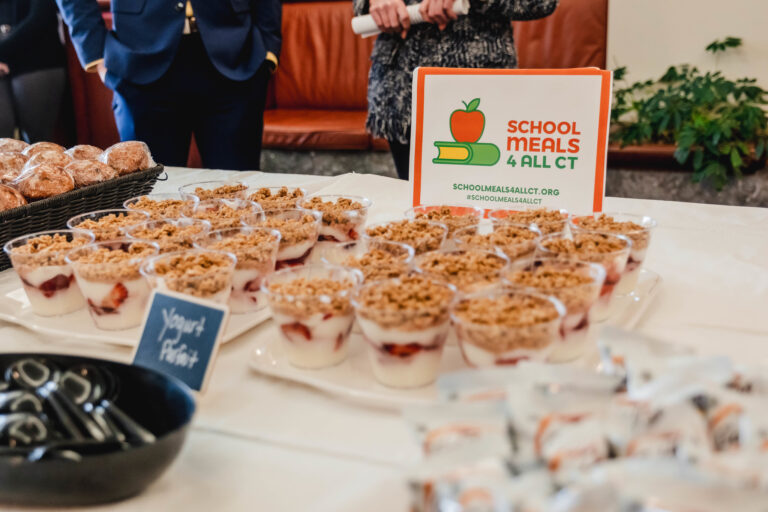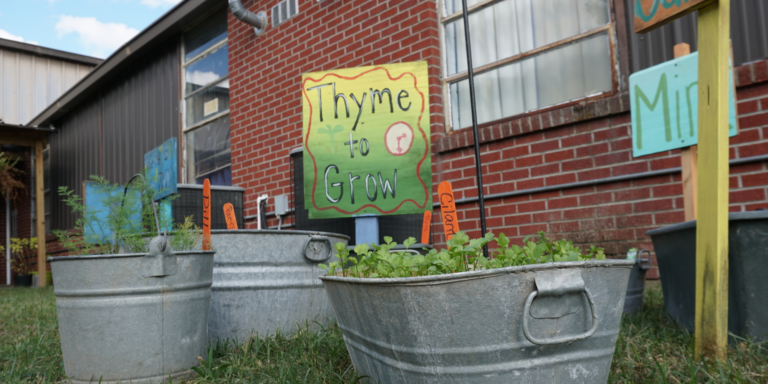School Breakfast: 4 Things to Know
This National School Breakfast Week, learn how schools around the country feed millions of kids a healthy breakfast every day.
This National School Breakfast Week, learn how schools around the country feed millions of kids a healthy breakfast every day.

Happy National School Breakfast Week! National School Breakfast Week is an annual celebration of the School Breakfast Program, launched nationally in 1975 and serving millions of kids every day. School breakfast is an opportunity to feed our kids nourishing meals that help them learn, grow, and thrive.
In celebration of this week, here are four things you need to know about school breakfast.
There’s a reason you’ve heard that breakfast is the most important meal of the day. Have you ever gone a day without breakfast, only to find yourself with a growling stomach and trouble focusing? The same is true for kids—but unfortunately, not all children have access to a healthy breakfast at home. As a result, many kids arrive at school with empty bellies—and hungry kids can’t learn.
Enter the School Breakfast Program, a federal program administered by the USDA and through various state agencies, usually departments of education or agriculture. Started as a pilot program in 1966 and expanded nationally in 1975, the School Breakfast Program ensures that kids have an opportunity every morning to fuel up at school before a big day of learning. Students from low-income families are also eligible for free or reduced-price school breakfast thanks to this program.
In addition, federal provisions allow schools with a high number of children from low-income families to offer breakfast to all students at no cost to families, made possible by the USDA’s Community Eligibility Provision. According to our partners at the Food Research & Action Center, this supports students’ wellbeing, reduces the stigma of only certain kids receiving free or reduced-priced meals, and lightens the administrative burden for schools.
If you missed this in history class, you’re not alone.
Beginning in January 1969 at an Episcopal church in Oakland, the Black Panther Party began offering free breakfast to children before school. The Free Breakfast for School Children program was part of the Black Panthers’ multifaceted effort to create social programs that supported Black people’s survival and wellbeing. Volunteers would solicit food donations from local grocery stores and prepare healthy meals for hundreds, then thousands of school kids, all for free.
Indeed, schools saw a difference; teachers reported that students were no longer falling asleep in class or complaining about hunger pains. The Black Panther Party fed tens of thousands of children in at least 45 programs across the country, often feeding thousands of kids per day—all while being vilified by the media.
The FBI eventually dismantled the initiative in an effort to delegitimize and destroy the Black Panther Party. FBI agents lied to parents about the safety of the food being served, for example, and some even broke into churches to destroy food meant for students. Still, the Black Panthers’ free breakfast program pressured the federal government to create a permanent school breakfast program and implement it nationwide.
According to our partner Share Our Strength’s No Kid Hungry campaign, the School Breakfast Program is underutilized: 22 million kids eat free or reduced-priced lunch at school, but only 12 million eat free or reduced-price breakfast. Mornings can be a busy time for families. Between getting ready for school, hurrying on and off the school bus, and trying to make it to class on time, getting breakfast in the cafeteria before school starts can be challenging for many kids.
In response to this issue, many schools are implementing programs referred to as Breakfast After the Bell to increase participation in school breakfast programs. These programs allow kids to eat breakfast in the classroom after the official start of the school day, or during a designated break. Schools that utilize these programs see an average of 58% to 88% participation in school breakfast.
These programs have other benefits, too. A recent study from No Kid Hungry found that Breakfast After the Bell programs can help reduce chronic absenteeism, a problem in which nearly 8 million students miss three weeks of school or more each year.
Federal policy isn’t the only way to guarantee every kid has access to a healthy breakfast. Policy changes at the state or district level can be effective in increasing participation in the School Breakfast Program, particularly among low-income children who need it the most.
For example, in recent years, an increasing number of states have passed Breakfast After the Bell legislation. At least 12 states—Colorado, Delaware, Illinois, Maine, Nevada, New Mexico, New Jersey, New York, Oregon, Washington, Massachusetts, and Ohio, plus Washington, D.C.—have successfully enacted Breakfast After the Bell requirement bills to make breakfast a part of the school day for every kid. Some states have successfully increased breakfast participation by providing additional state funding to support implementing these programs.
No Kid Hungry has outlined some of the most successful state-level school breakfast initiatives, as well as the various types of policy changes that states and localities can pursue.
Want to speak out on school meals policies? Sign up for FoodCorps Action Alerts and we’ll send you opportunities to raise your voice for healthy schools and healthy kids. You can also join our partners at No Kid Hungry in speaking out for Breakfast After the Bell.

The Policy Brief, March/April 2024: WIC is Fully Funded

What Makes a Great School Garden?

5 Delicious Spring Recipes to Cook With Kids